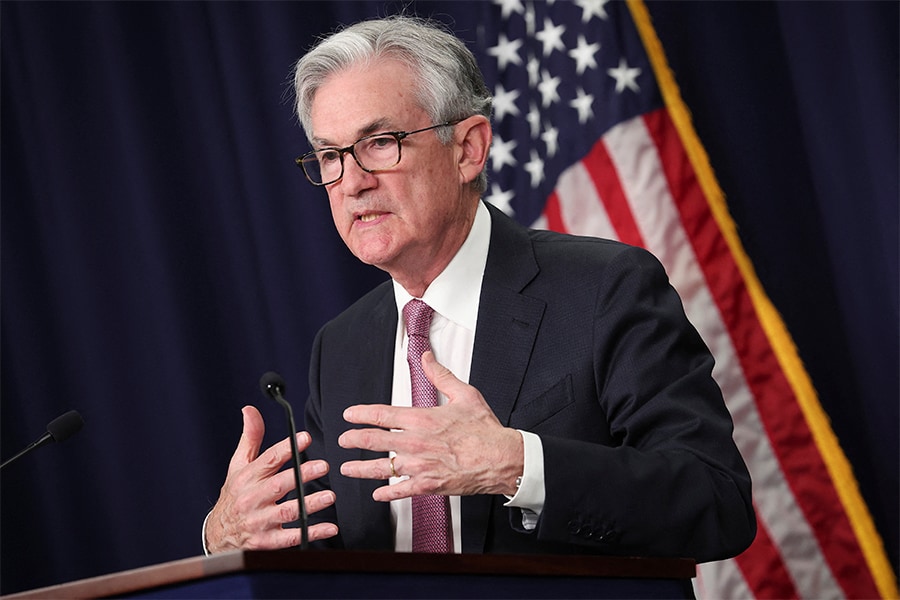
US Fed makes biggest rate increase since 2000 to fight inflation
Inflation has become an overriding concern after the world's largest economy saw annual consumer prices surge 8.5 percent over the 12 months to March—the biggest jump since December 1981
 Federal Reserve Chairman Jerome Powell speaks at a news conference following a Federal Open Market Committee meeting on May 04, 2022 in Washington, DC. Powell announced the Federal Reserve is raising interest rates by a half-percentage point to combat record high inflation. (Credits: WIN MCNAMEE / Getty Images via AFP)
Federal Reserve Chairman Jerome Powell speaks at a news conference following a Federal Open Market Committee meeting on May 04, 2022 in Washington, DC. Powell announced the Federal Reserve is raising interest rates by a half-percentage point to combat record high inflation. (Credits: WIN MCNAMEE / Getty Images via AFP)
Washington, United States: The Federal Reserve on Wednesday announced its biggest rate hike since 2000, with a half percentage point increase as it works to crush soaring US inflation.
With inflation at the highest rate in four decades, Federal Reserve Chair Jerome Powell sent a message directly to the American people, expressing concern for the pain caused by rising prices, and pledging to use all available tools to bring them down.
But he told reporters he remains confident the economy is strong enough to withstand rate increases without tipping into a recession.
After a quarter-point hike in March, the US central bank's policy-setting Federal Open Market Committee (FOMC) pushed the benchmark interest rate above 0.75 percent as it works to cool the economy, and confirmed more increases "will be appropriate."







